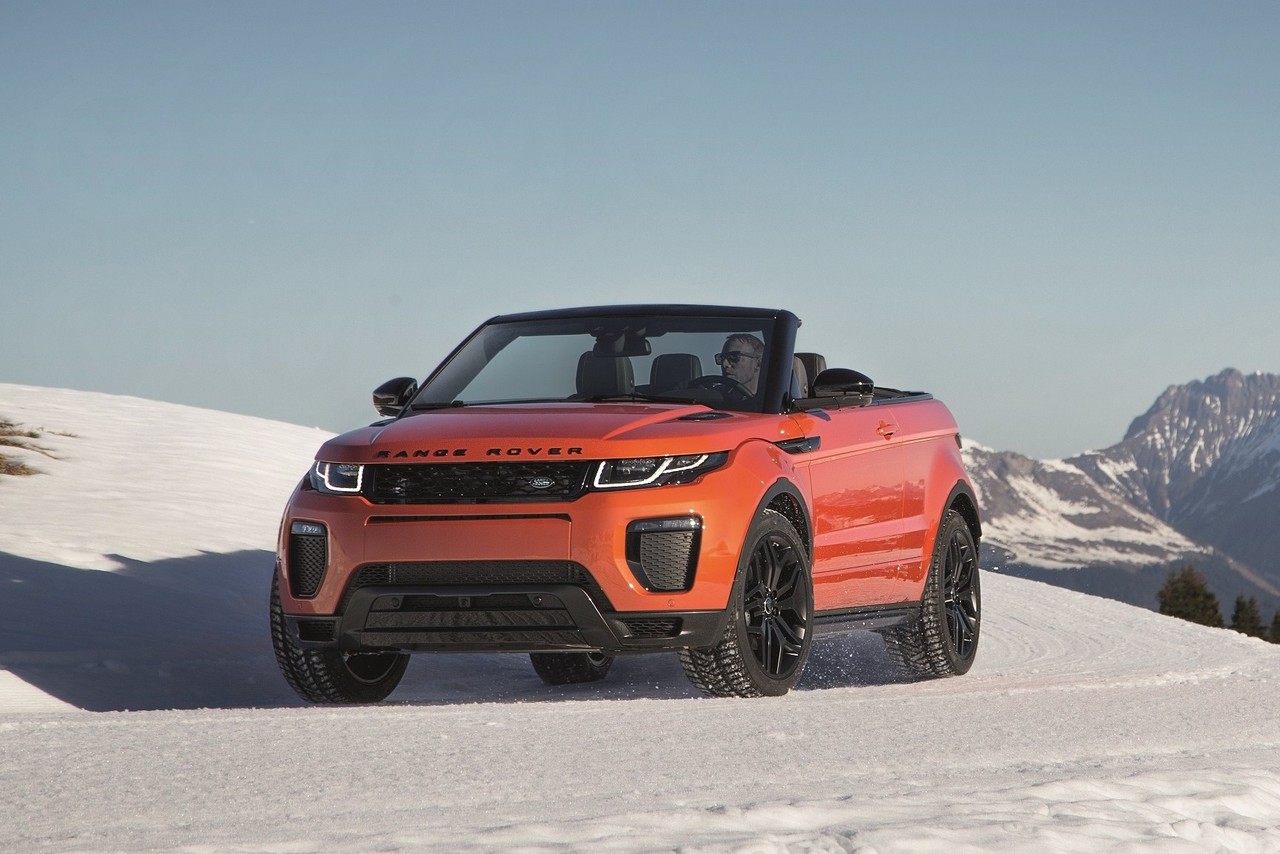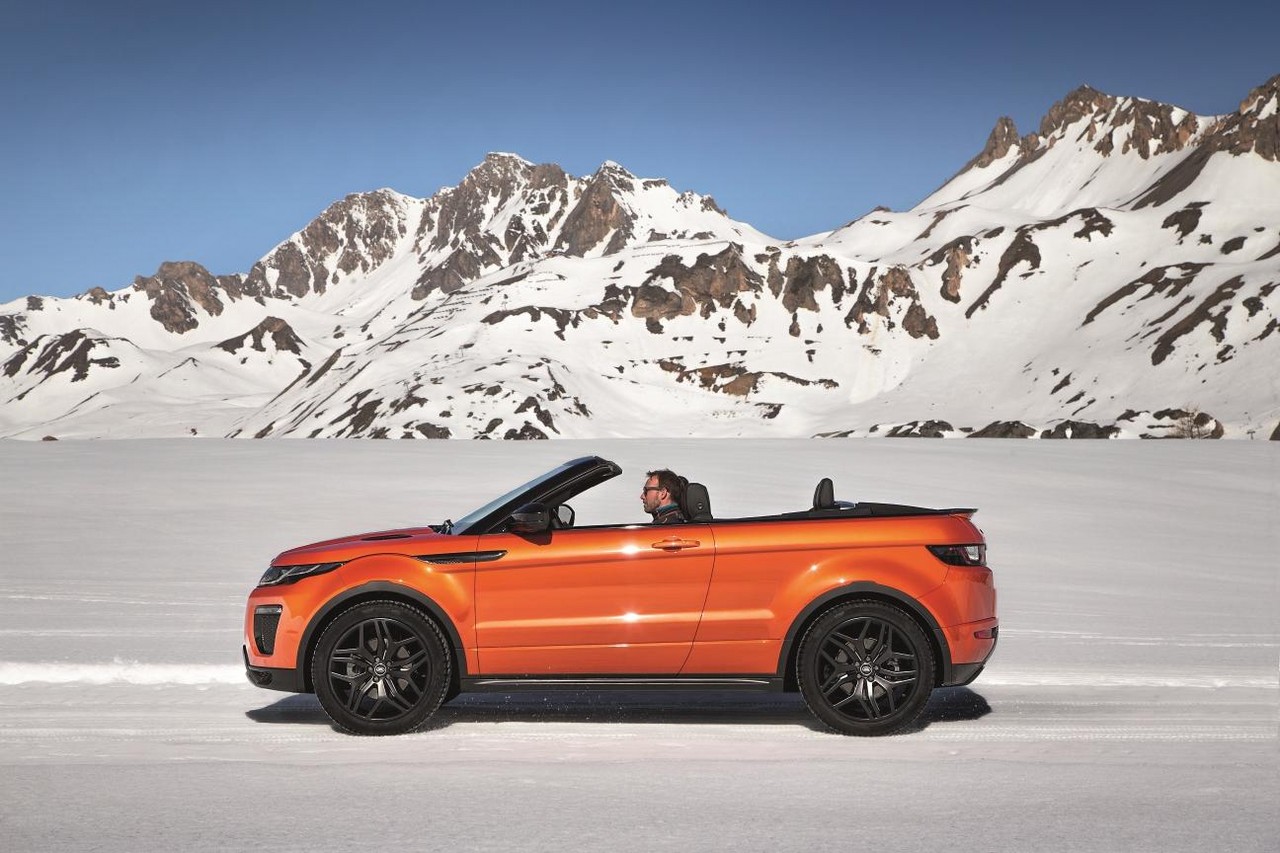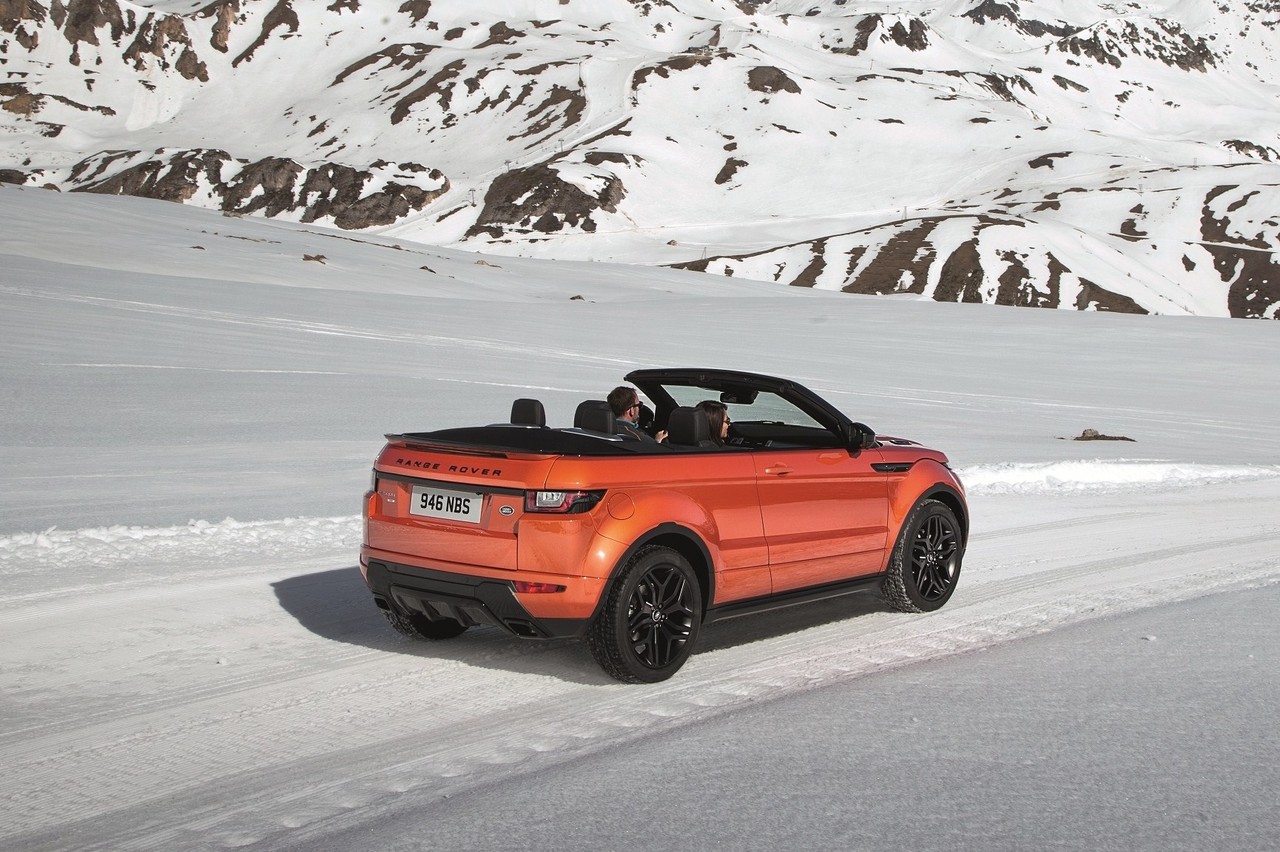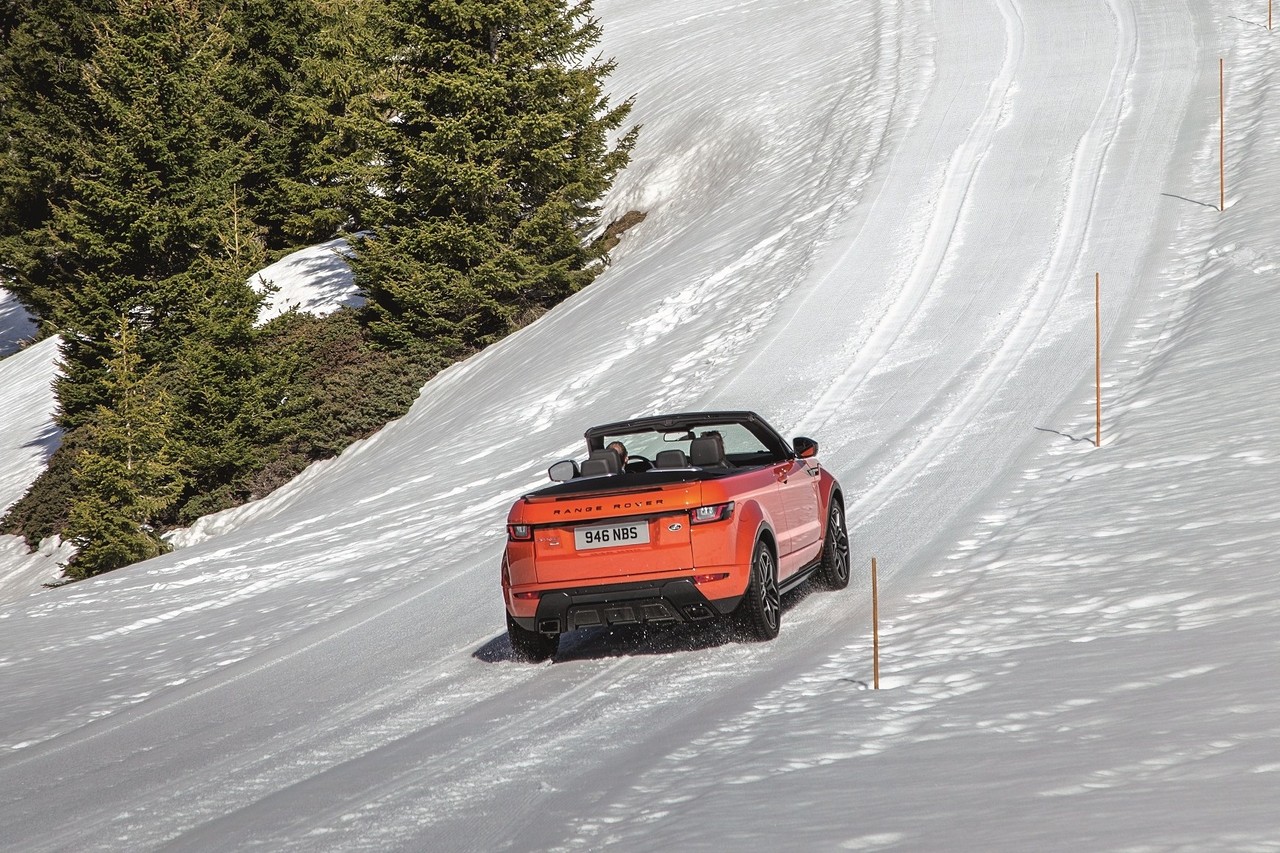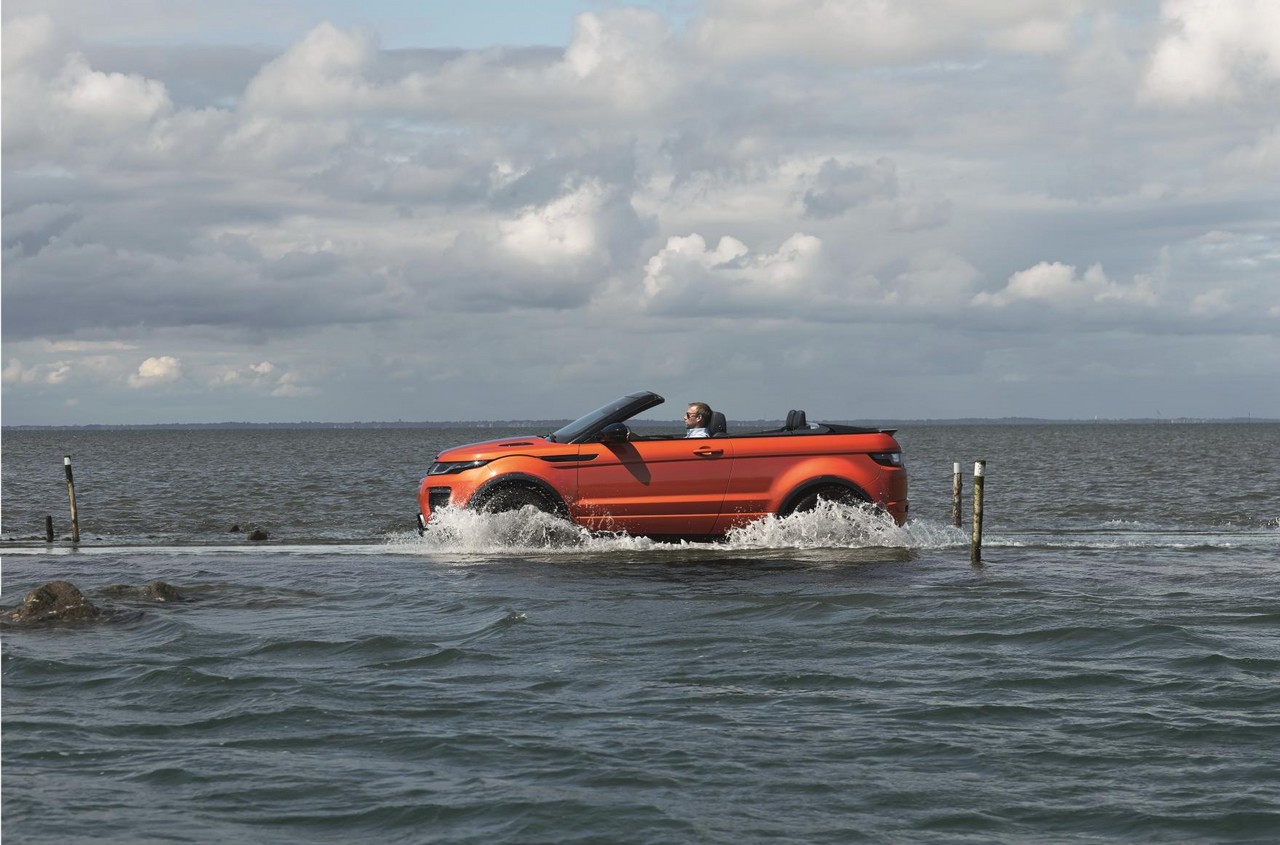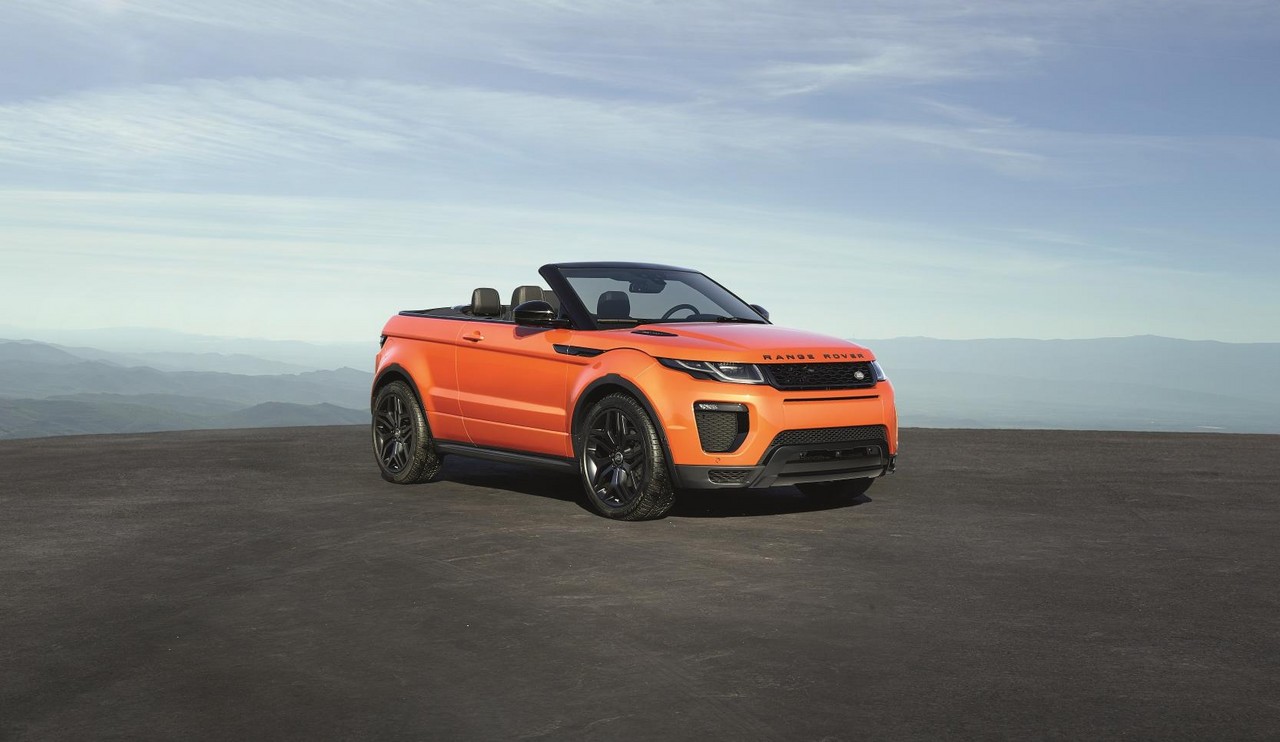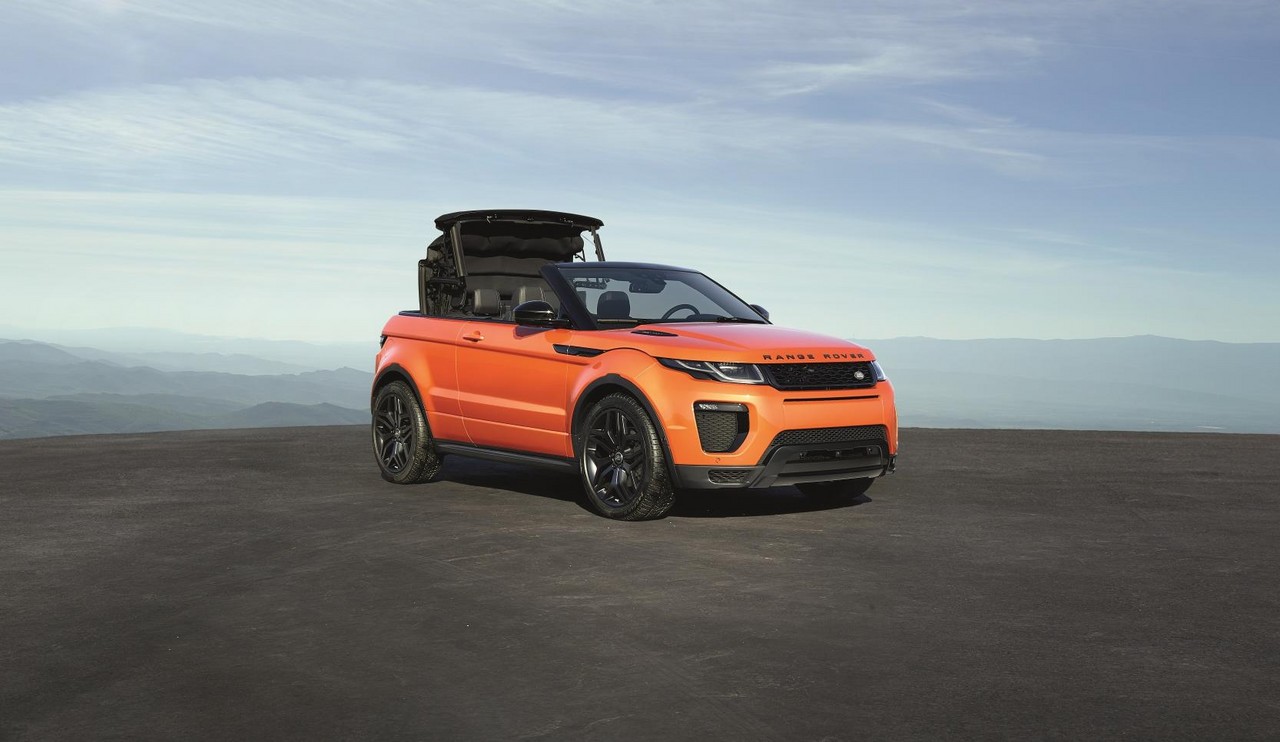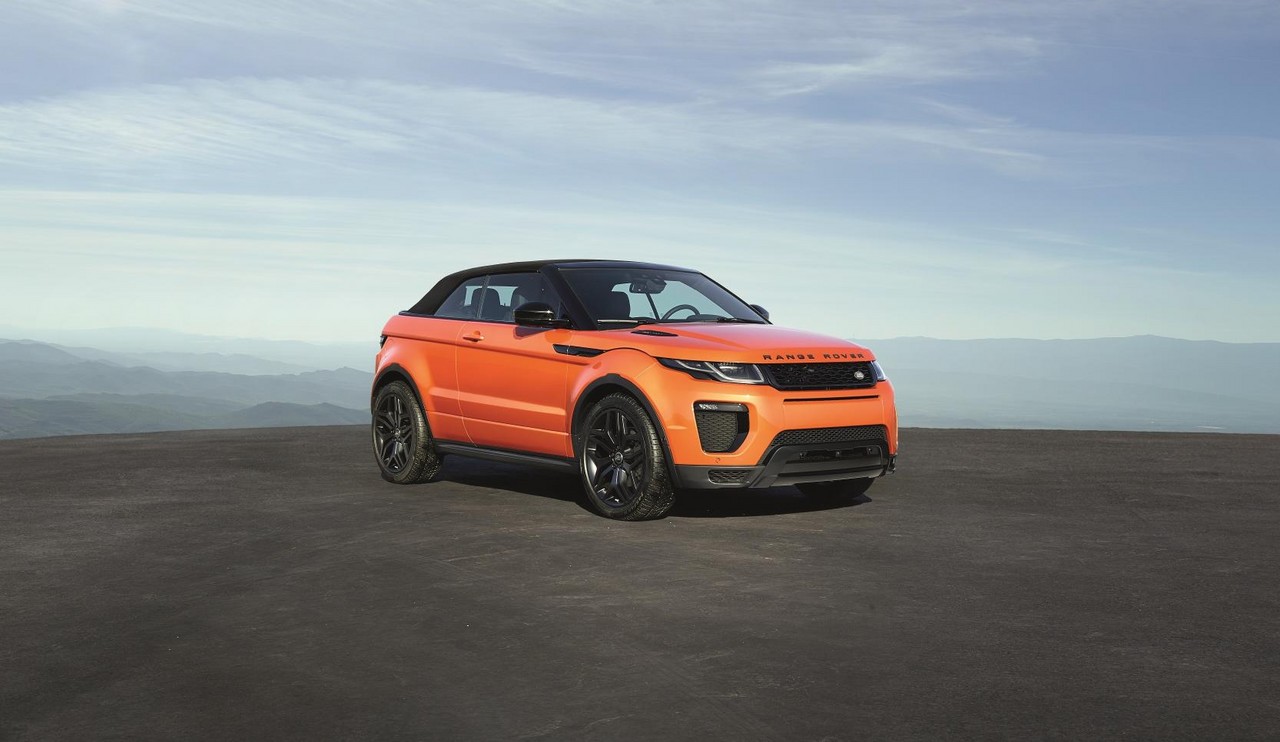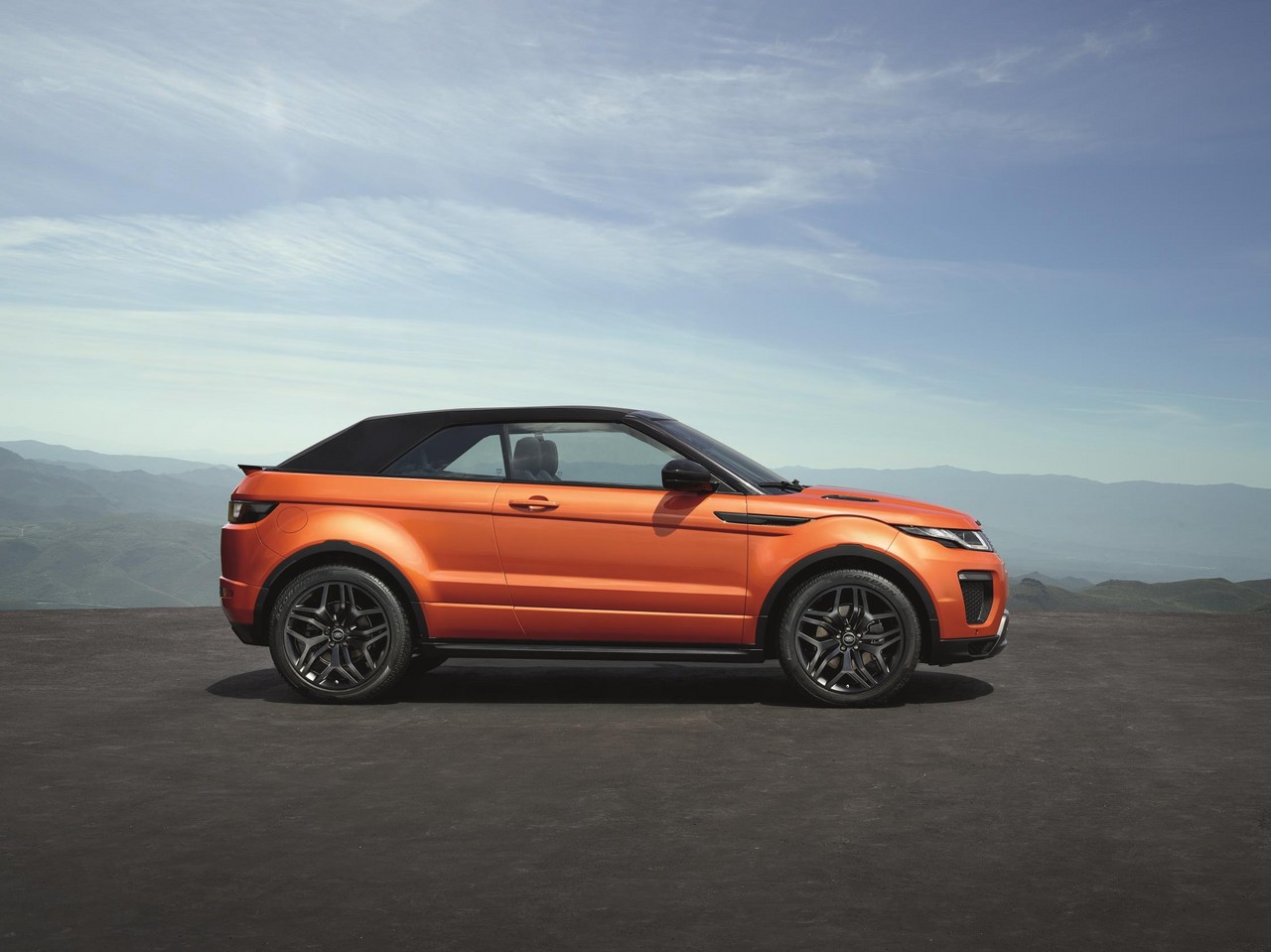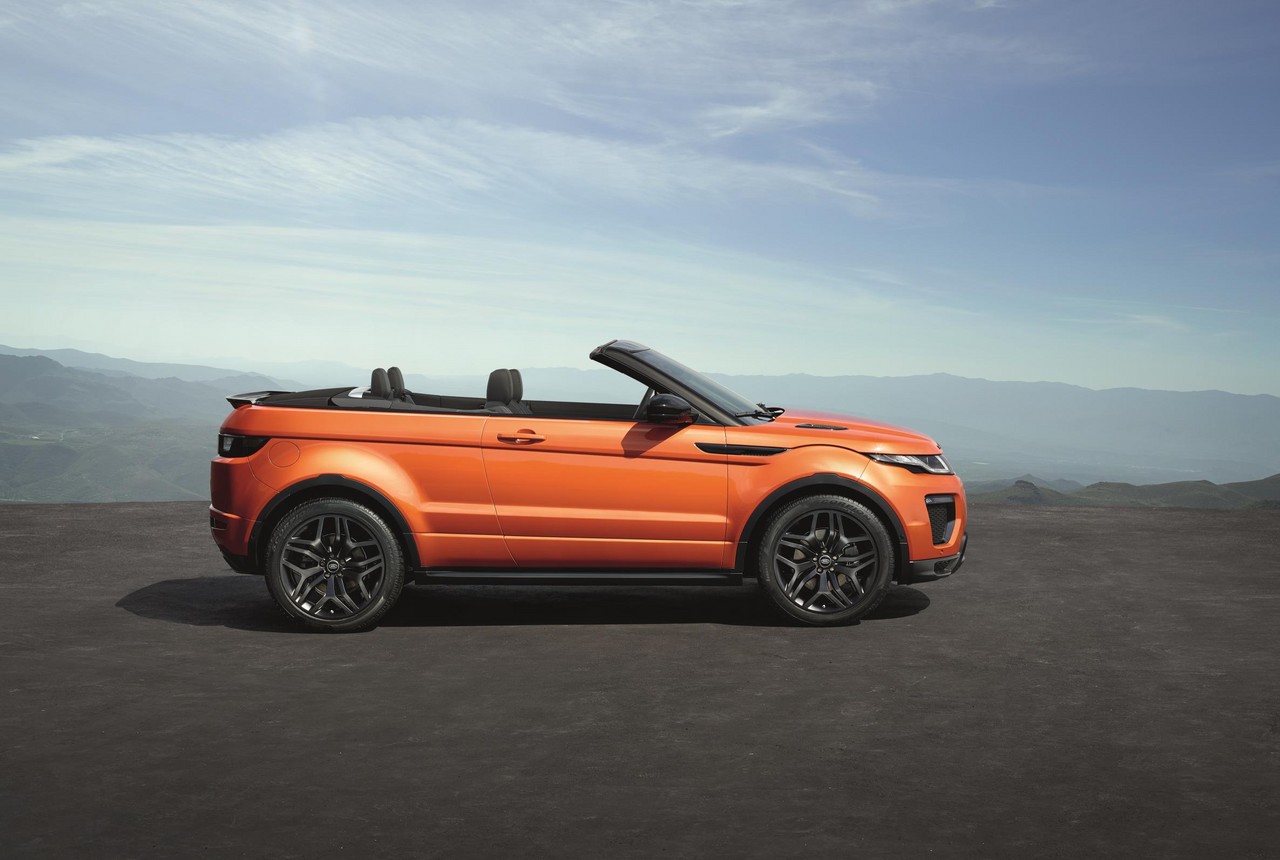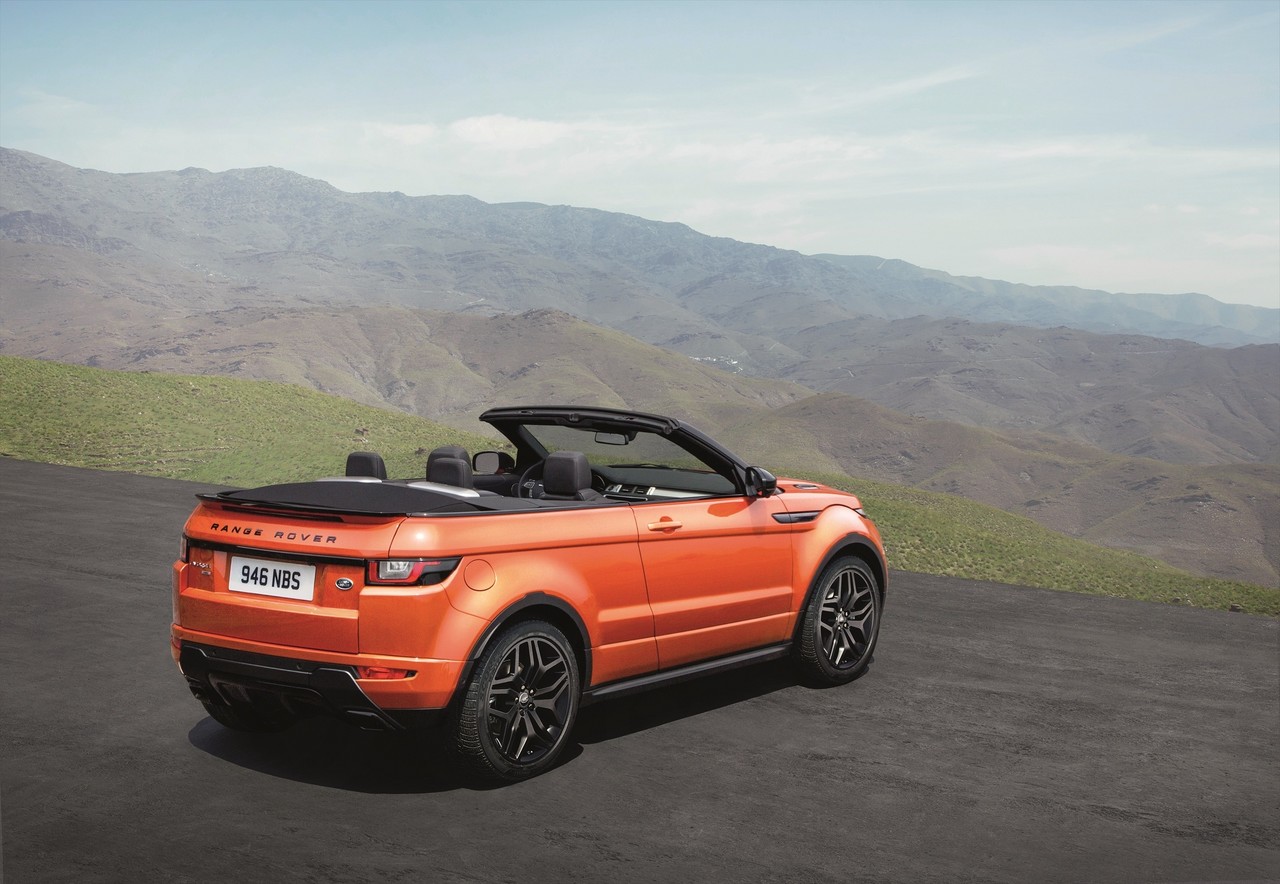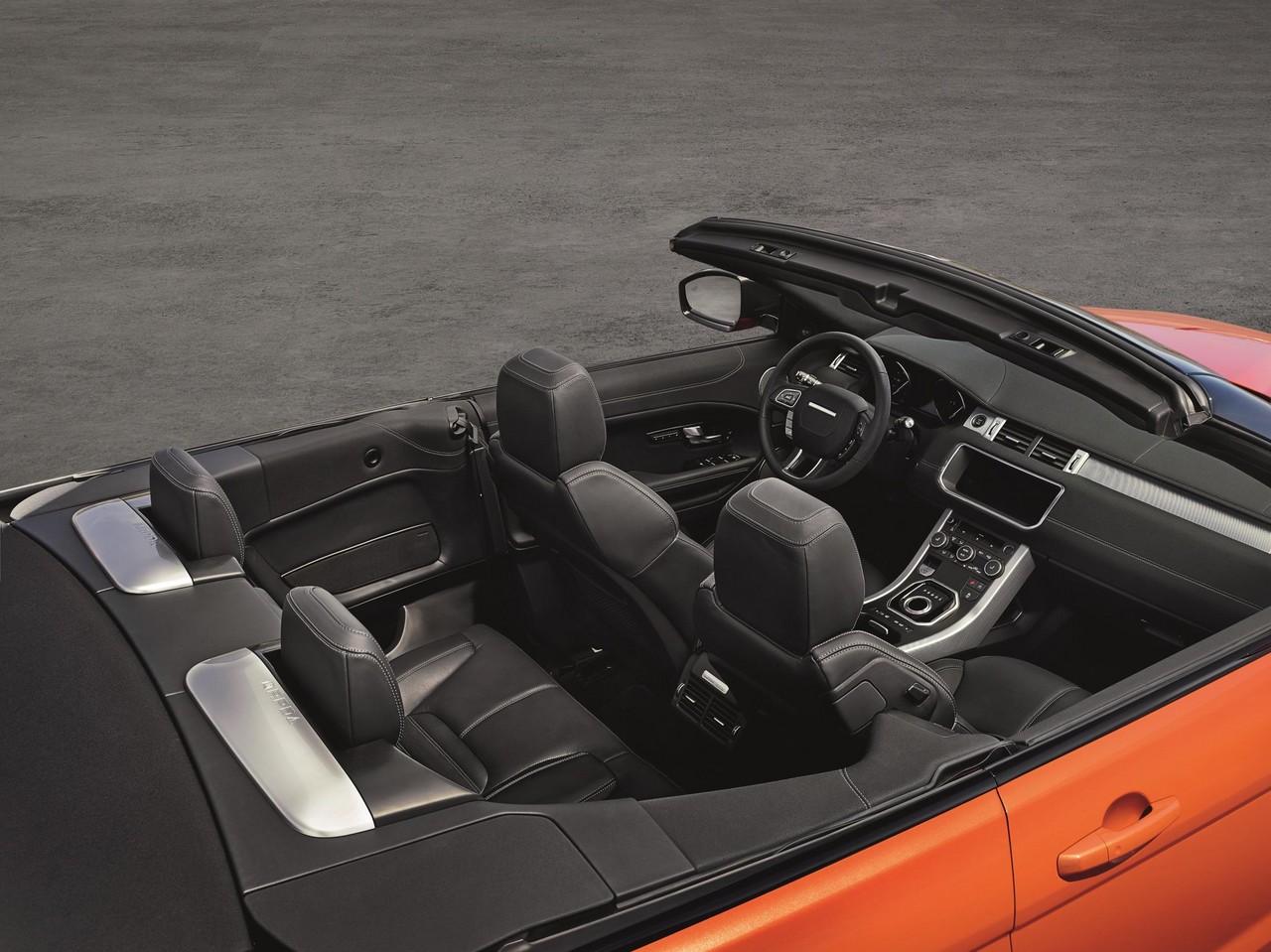
- SUV styling with convertible functionality
- Well-weighted steering
- Structural reinforcement makes for rigid body…
- … but 275 kg weight gain over Range Rover Evoque hardtop hurts performance, fuel economy, ride and handling
- Small boot
- Drag coefficient of 0.39 Cd
- Do yourself a favour and just get a Mazda ND MX-5 . The Evoque Convertible is an overpriced fashion accessory.
Overview
The Land Rover Range Rover Evoque Convertible was officially launched in Australia in November 2016. Manufactured at Land Rover’s Halewood plant in the UK, the four-seat L538 Range Rover Evoque Convertible was available with 2.0-litre turbocharged diesel and petrol engines, both of which were mated to nine-speed ZF 9HP48 automatic transmissions. Furthermore, the Evoque Convertible range consisted of SE Dynamic and HSE Dynamic editions.
Si4 and TD4 Ingenium engines
For the Range Rover Evoque Convertible TD4 180, the 2.0-litre AJ200D diesel engine had an aluminium block and cylinder head, double overhead camshafts, four valves per cylinder, a cam phaser for variable exhaust valve timing, common-rail injection operating at 1800 bar, a single variable geometry turbocharger, a compression ratio of 15.5:1, exhaust gas recirculation, a selective catalytic reduction (SCR) system and twin counter-rotating balancer shafts.
For the Range Rover Evoque Convertible Si4, the 2.0-litre turbocharged petrol engines had an aluminium block and cylinder head, double overhead camshafts, four valves per cylinder, variable intake and exhaust valve timing, direct petrol injection operating at 150 bar, a single scroll turbocharger, a compression ratio of 10.0:1 and twin counter-rotating balancer shafts.
To reduce fuel consumption, both engines had a Stop/Start system which enabled the engine to shut down when the vehicle was stationary in traffic.
| Variant | Edition | Engine | Trans. | Peak power | Peak torque |
|---|---|---|---|---|---|
| TD4 180 | SE Dynamic, HSE Dynamic |
2.0-litre turbo-diesel I4 | 9sp auto | 132 kW at 4000 rpm | 430 Nm at 1750 rpm |
| Si4 | SE Dynamic, HSE Dynamic |
2.0-litre turbo petrol I4 | 9sp auto | 176.5 kW at 5800 rpm | 340 Nm at 1750 rpm |
All-wheel drive system: ‘Active Driveline’
For Australia, the Range Rover Evoque Convertible TD4 and Si4 had Land Rover’s ‘Active Driveline’ which was manufactured by GKN Driveline. Under low loads or when coasting, the Active Driveline system decoupled the rear axle to minimise parasitic losses and improve fuel consumption. Since Active Driveline disconnected the all-wheel drive components from the gearbox, rather than the central coupling, parasitic losses could be reduced by up to 75 per cent. The Active Driveline system also included a torque vectoring function.
All Range Rover Evoque Convertible variants were fitted with Land Rover’s ‘All-Terrain Progress Control’ system which could maintain a pre-determined speed in forward or reverse gears between 1.8 km/h to 30 km/h so that the driver could concentrate on steering the vehicle.
Body and soft-top roof
Compared to the Range Rover Evoque , the Evoque Convertible was 15 mm longer (at 4370 mm), 15 mm wider (1980 mm) and 26 mm lower (1609 mm), though wheelbase length was unchanged at 2660 mm. Furthermore, the Range Rover Evoque Convertible has a 500 mm wading depth, drag coefficient of 0.39 Cd and 251 litre boot.
The Range Rover Evoque Convertible’s polyacrylic fabric roof was produced by Webasto and had five insulating layers. According to Land Rover, the soft-top roof was the longest and widest fitted to a vehicle at the time of its release. Operated by four electric motors and utilising a ‘Z-fold’ mechanism, the roof could be lowered in 18 seconds, raised in 21 seconds and operated at speeds of up to 48 km/h.
Due to its convertible body, the Range Rover Evoque had significant structural reinforcement relative to the hardtop Evoque to achieve comparable rigidity. This additional reinforcement, however, made the Range Rover Evoque Convertible 275 kg heavier for comparable variants – the Evoque Convertible Si4 and Evoque Convertible TD4 had unladen weights of 1890 kg and 1930 kg, respectively.
Suspension and steering
The Range Rover Evoque Convertible had MacPherson strut front suspension (with a lower control arm and anti-roll bar) and independent rear suspension (with lateral and longitudinal links, and an anti-roll bar).
The Range Rover Evoque Convertible had rack-and-pinion steering with electric power assistance; the steering wheel required 2.31 turns from lock-to-lock, while its turning circle was 11.3 metres (kerb-to-kerb).
Safety equipment
Standard safety equipment for the Range Rover Evoque Convertible included dual front airbags, a driver’s knee airbag, front seat-mounted airbags with combined thorax and head protection, ABS, electronic brake force distribution, brake assist, electronic stability control, traction control, cornering brake control, rollover stability control, trailer stability assist and front seatbelts with pre-tensioners and load limiters.
As standard, the Range Rover Convertible was also equipped with:
- An ‘Autonomous Emergency Braking’ (AEB) system which used a forward-facing digital stereo camera to identify potential hazards in the vehicle’s path. If detected, the driver initially received visual and audible warnings. If the driver failed to respond, the brakes were applied automatically to reduce vehicle speed. While potential collisions could be averted at speeds below 35 km/h, the severity of the collision would be reduced for speeds below 80 km/h; and,
- A Lane Departure Warning system which warned the driver via steering wheel vibrations if the vehicle began to drift out of its lane.
The Range Rover Evoque Convertible also had two deployable roll-over bars – made from aluminium – in the rear bodywork which could rise within 90 milliseconds in the event that a potential rollover situation is identified.
Brakes
The Range Rover Evoque Convertible had 325 mm by 30 mm ventilated front disc brakes and 317 mm by 10 mm solid rear discs.
Features: Range Rover Evoque Convertible SE Dynamic
As standard, the Range Rover Evoque Convertible was equipped with Jaguar Land Rover’s ‘InControl Touch Pro’ infotainment system which included a 10.2-inch touchscreen with Dual View technology, a 60 GB solid-state drive (SSD), navigation, voice control, smartphone integration, Ethernet networking and two USB inputs.
Additional standard features for the Range Rover Evoque Convertible SE Dynamic included 18 x 8.0J seven-spoke alloy wheels with 235/60 R18 tyres, a 380 watt Meridian digital sound system with ten speakers, a dual-channel subwoofer and CD/DVD player, grained leather upholstery, eight-way power adjustable front seats with memory settings, cruise control, climate control air conditioning, xenon headlights with washers, LED daytime running lights, front and rear parking sensors, a rear view camera with hitching guidance, dusk-sensing headlights, rain-sensing wipers, a leather-wrapped steering wheel, remote central locking with proximity key (i.e. keyless entry), power adjustable and heated door mirrors with power folding and automatic dipping on reverse, power windows, a height and reach adjustable steering wheel, an auto-dimming rear view mirror, push-button start, rear privacy glass, ‘Ebony Morzine’ headlining, carpet mats, illuminated vanity mirrors, ambient lighting, two 12 volt power sockets (front and luggage compartment) a trip computer and an immobiliser
The Range Rover Evoque Convertible was supplied with an 18-inch temporary steel wheel and 155/85 tyre.
Features: Range Rover Evoque Convertible HSE Dynamic
The Range Rover Evoque Convertible HSE Dynamic was distinguished by its 19 x 8.0J seven-split-spoke alloy wheels with 235/55 R19 tyres, Oxford leather upholstery, heated and cooled front seats, twelve-way power adjustable front seats with memory settings, front fog lights, Automatic High Beam Assist, illuminated treadplates, configurable ambient lighting (ten colours), bright pedals and a head-up display (HUD).
Specifications
Related links
